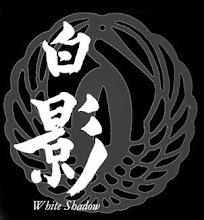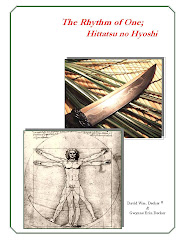A SAMPLING OF OUR NEW BOOK:
WHEN TWO TIGERS FIGHT

When Two Tigers Fight, One Will Die and the Other Will Be Scarred For Life.
The main focus of this book is a select few friends who are makers of fighting knives, and how their knives can be used in the defense of your life.
The knives illustrated herein are for the most part my own, I bought them and therefore I have a personal working knowledge of them. My opinions are not based on other’s writings or knives that I have only seen or read about in magazines.
It is only due to my wife’s gracious nature that I have been able to expend so much of my time and our money following my passion for steel.
Never before in the history of modern Man have so many people been engaged in custom knife-making. Unfortunately, while many of these knife-makers are excellent craftsmen very few of them are capable of capturing the essence of a fighting knife. Why, because not one in a hundred, perhaps not even one in a thousand, have ever been trained in the use of a fighting knife.
What is truth?
I think this is a question that anyone teaching Martial Arts needs to ask of themselves, especially those of us teaching the gritty art of knife-fighting and defense. Some truths will become self-evident in this book and others will perhaps remain less obvious.
Pseudo-Budo Warriors:
The Knife-Fighter: the Man the Myth, the Legend:
Dropping into a low crouch, his lips curled back in a snarl. A deep growl resonated from deep within his throat as his tongue flicked back and forth across his teeth like a darting snake. I knew I was in for trouble, he was in a foul temper and his knife was thirsting for blood. I silently slid my blade from its sheath.
This is "reality," as depicted in most knife-fighting media on the market today
Chapter II: Tools of the Trade
Weapon Design, by Evolution or Revolution:
hat criteria are at work in the design of a fighting knife, whether it is a dagger or a Bowie? What role does culture or ethnicity play in the design process? There are two major, diametrically opposed philosophies covering the design of weaponry and its usage. This seems to be the same sort of East - West dichotomy that divides and influences so many aspects of the two halves of our world. Topics include:
A Culture of Steel:
Some Lessons in Blade Geometry:
What is a Tactical Knife?
The Long and Short of it:
What kind of steel is that?
Which is Best, Cut and/or Thrust:
Any Old Knife Will Do:
Selecting a Fighting Knife:
How does one go about selecting a suitable fighting knife?
I think this is a question that anyone teaching Martial Arts needs to ask of themselves, especially those of us teaching the gritty art of knife-fighting and defense. Some truths will become self-evident in this book and others will perhaps remain less obvious.
Pseudo-Budo Warriors:
The Knife-Fighter: the Man the Myth, the Legend:
Dropping into a low crouch, his lips curled back in a snarl. A deep growl resonated from deep within his throat as his tongue flicked back and forth across his teeth like a darting snake. I knew I was in for trouble, he was in a foul temper and his knife was thirsting for blood. I silently slid my blade from its sheath.
This is "reality," as depicted in most knife-fighting media on the market today
Chapter II: Tools of the Trade
Weapon Design, by Evolution or Revolution:
hat criteria are at work in the design of a fighting knife, whether it is a dagger or a Bowie? What role does culture or ethnicity play in the design process? There are two major, diametrically opposed philosophies covering the design of weaponry and its usage. This seems to be the same sort of East - West dichotomy that divides and influences so many aspects of the two halves of our world. Topics include:
A Culture of Steel:

Some Lessons in Blade Geometry:
What is a Tactical Knife?
The Long and Short of it:
What kind of steel is that?
Which is Best, Cut and/or Thrust:
Any Old Knife Will Do:
Selecting a Fighting Knife:
How does one go about selecting a suitable fighting knife?
Fit and Finish: and some random thoughts:
Clattering Kydex, whatever happened to cows?
Damned if you do, Dead if you don’t:
Carrying Concealed:
Chapter III: A Focus on a Select Few Makers:
This section will discuss a select few knifemakers and their work.
Peter Parkinson and the F/S Fairbairn Sykes:
Brent Sandow Viper and Victorian:
Gary Bradburn Shobu Tanto series:
The Decker~Sandow Cobra:
Laci Szabo Knives:
John Gonzalez knives:
A Plethora of Bowies: choppers and fencers
The Smatchet: mostly a chopping weapon.
Frizzell Boot Dagger and Bowie:
Richard Derespina’s Knives
Graham Brothers Knives
DJ Urbanovsky & American Kami knives
Clattering Kydex, whatever happened to cows?
Damned if you do, Dead if you don’t:
Carrying Concealed:
Chapter III: A Focus on a Select Few Makers:
This section will discuss a select few knifemakers and their work.
Peter Parkinson and the F/S Fairbairn Sykes:
Brent Sandow Viper and Victorian:
Gary Bradburn Shobu Tanto series:
The Decker~Sandow Cobra:
Laci Szabo Knives:
John Gonzalez knives:
A Plethora of Bowies: choppers and fencers
The Smatchet: mostly a chopping weapon.
Frizzell Boot Dagger and Bowie:
Richard Derespina’s Knives
Graham Brothers Knives
DJ Urbanovsky & American Kami knives
Finally, My Choice for the Perfect Fighting Knife:
After collecting fighting knives for over 40 years my vote is finally in for "the Perfect Fighting Knife." Drum roll please! The title goes to ………. You have to buy the book to find out!
Chapter IV:
Some Factory Knives of Interest:
The Urban Dart
Cold Steel Bowies
Benchmade Griptilian fixed blade
Ontario Knives Bagwell Bowies
Wotan Project: Brazil
ROSarms USA: Russia
Ethnic knives from Indonesia
Fighting Folders:
Chapter V: Concepts and Techniques
Itto ~ Itten:
Knife Grips: a review
Losing Your Grip:
Knife Disarms:
Disarming Using a Knife:
Chicken Wings, Keeping Your Elbows in:
Hyoshi: Timing and a Bit of Morality:
Fighting Ranges:
Transitioning: Opening and Closing the Distance:
Dancing to a Broken Rhythm:
Compression and Expansion, manipulating the range:
Keep it Stupid, Simple:
Closest Target ~ Shortest Distance:
Picking a Stance:
The Knife Becomes a Hand:
This is just a very small sample of the topics covered in our new book. It will be fully illustrated and already over 175 pages long. Please contact us for more information! Publication will hopefully be in the Fall of 2007.
Questions/Comments? Email me at: ghdave2@hotmail.com
Benchmade Griptilian fixed blade
Ontario Knives Bagwell Bowies
Wotan Project: Brazil
ROSarms USA: Russia
Ethnic knives from Indonesia
Fighting Folders:
Chapter V: Concepts and Techniques

Itto ~ Itten:
Knife Grips: a review
Losing Your Grip:
Knife Disarms:
Disarming Using a Knife:
Chicken Wings, Keeping Your Elbows in:
Hyoshi: Timing and a Bit of Morality:
Fighting Ranges:
Transitioning: Opening and Closing the Distance:
Dancing to a Broken Rhythm:
Compression and Expansion, manipulating the range:
Keep it Stupid, Simple:
Closest Target ~ Shortest Distance:
Picking a Stance:
The Knife Becomes a Hand:
This is just a very small sample of the topics covered in our new book. It will be fully illustrated and already over 175 pages long. Please contact us for more information! Publication will hopefully be in the Fall of 2007.
Questions/Comments? Email me at: ghdave2@hotmail.com











